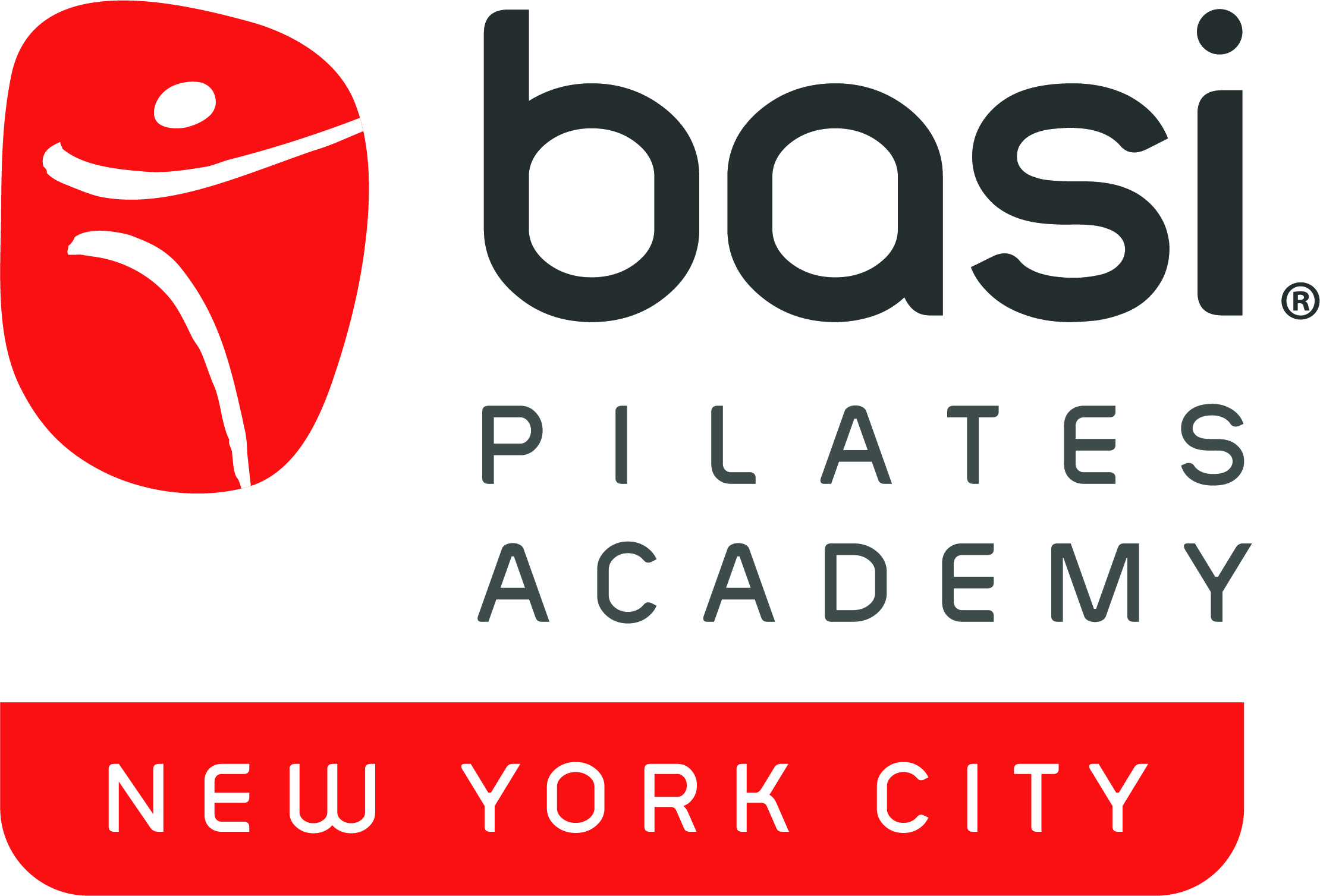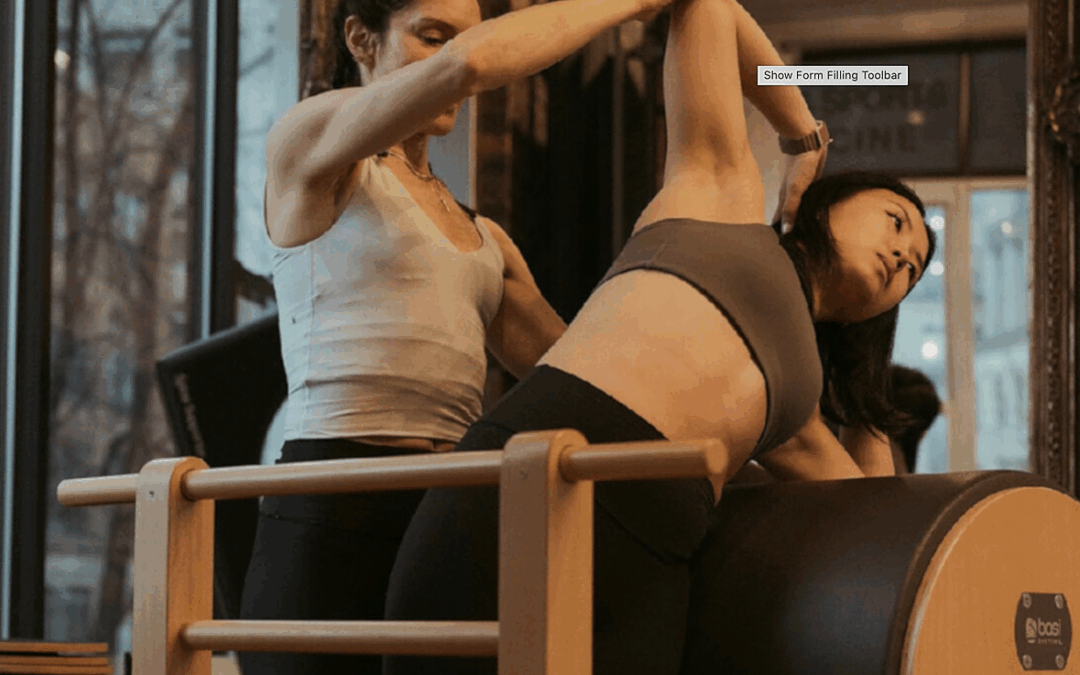Favorite Pilates Repertoire On The BASI Systems Cadillac To Enhance Spinal Articulation
What is spinal articulation?
Spinal articulation is the coordinated movement between the joints that lie around every vertebra of the spine. These movements are flexion, extension, side bending, and rotation.
Why is spinal articulation so important?
How we do or don’t articulate the joints of the spine relates directly to how we feel in stillness, such as sitting, standing, and even how we sleep. Every joint needs some articulation relative to its placement in the spine. For example, the cervical and lumbar areas of the spine tend toward extension, while the thoracic area tends toward flexion. We need to counter this tendency to active balance in the structures.
Pilates aims to balance all of these mobilities with strength and stability in the surrounding areas. Without healthy articulation, we create weak links in our kinetic chain.
There are a plethora of reasons why we may lack articulation, ranging from:
1. Genetic predispositions
2. Acute injuries anywhere in the body
3. A basic lack of awareness and practice. If you don’t use it, you lose it. So, regardless of the reason, I will focus on the latter since it will always help the first 2 reasons mentioned, especially since the benefits lie within the act of trying! Think of it like any physical skill. take balance, for example, working on balance exercises yields loads of benefits even if you are wobbling all over the place.
What are the benefits of even working on spinal articulation, even if it’s not “perfect”?
1. Prevent Compensations and Asymmetries
If one spinal segment doesn’t have enough motion or articulation, often called hypo-mobility, then other spinal segments will take on the work and move too much, causing unnatural hypermobility in certain joints.
2. Lower Risk of Injury
Protect the house for your nervous system! Spinal control during movement can keep the discs, facet joints, and surrounding muscles healthy and free from strain.
3. Improve Posture
Since the spine houses your nervous system, it goes far beyond aesthetics when it comes to posture. Healthy spinal articulation will encourage optimal breathing, digestion, and energy levels.
How does spinal articulation affect the cervical and thoracic spine?
When you lift your arms overhead, your shoulder joint (glenohumeral joint) needs about 50% of the degree of lift in upward rotation of the scapula (shoulder blade) and some thoracic spinal extension to reach your optimal range of motion.
Without proper thoracic extension, not only does proper neck alignment become a challenge, but the scapula can not grant the upward rotation required. The shoulder joint will then cause poor forward motion in the socket limiting range and possibly cause or lead to pain, discomfort, impingements, and frozen shoulder syndrome.
How does spinal articulation affect the lumbar spine?
If the lumbar spine is tight and lacking articulation, the surrounding muscles and joints in the lower back and hips and are overworking or misfiring to compensate. Additionally, the abdominals can’t properly contribute to lumbar & pelvis coordination because they are unable to fire properly from the lumbar muscles, inhibiting them.
The inability to dissociate the hip from spine movement causes the glutes and the abdominal core muscles to fire ineffectively. Additionally, excessive lumbar movement or resting into extension due to gravity can cause lower back pain, hip pain, disjunction, and impingements. So let’s move!
How does BASI Pilates incorporate spinal articulation?
Joseph Pilates, who created the Pilates method he originally called Contrology, adamantly included spinal articulations in all directions and in all relationships to gravity. The BASI Pilates teacher training program adheres to these classical exercises with some well-thought-out adjustments and, along with some adaptations, modifications, and later variations in the BASI Pilates legacy programs.
Spinal articulation is the fourth of 12 blocks in the comprehensive BASI Pilates Block system. In the BASI Pilates mat work, spinal articulation is the third of six blocks. The arrangement of these blocks is what makes the BASI Pilates comprehensive and flexible programs so unique.
Stay tuned for my upcoming blog where I will elaborate on an articulate spine and show accessible exercises on the mat that you can work on in your own personal practice.
All repertoire courtesy of the BASI Pilates Comprehensive Program.
*Apply to repertoire from the BASI Pilates Legacy Program.
Footwork: Full series minus Calf Raises and Prances.
This series helps create length in the spine against the work of the legs.
Tower, Roll Up (bottom loaded), Monkey, *Monkey with Extension
Sitting Back, Prone 1, Prone 2
Side Reach, *Port a Bra, *Parakeet

